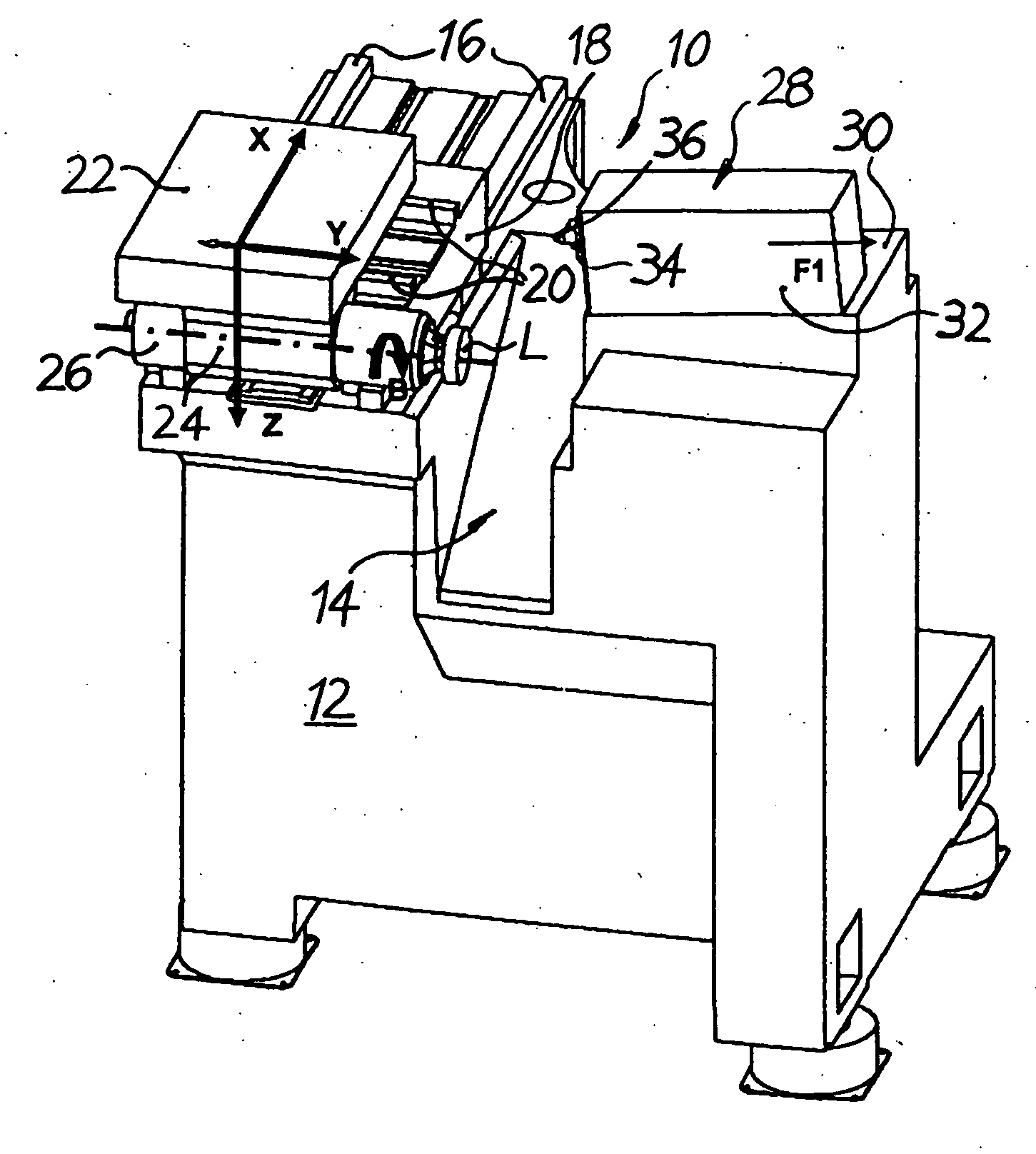Method for auto-calibration of a tool in a single point turning machine used for manufacturing in particular ophthalmic lenses
a single-point diamond turning and auto-calibration technology, applied in the direction of optical surface grinding machines, manufacturing tools, instruments, etc., can solve the problems of variable accuracy and repeatability, method does not lend itself to identifying the center and/or radius of the tool tip
- Summary
- Abstract
- Description
- Claims
- Application Information
AI Technical Summary
Benefits of technology
Problems solved by technology
Method used
Image
Examples
Embodiment Construction
[0054]FIG. 1 shows a CNC-controlled single point turning machine 10 in particular for surface machining of plastic spectacle lenses L. The single point turning machine 10 has a frame 12 defining a machining area 14. On the left of the machining area 14 in FIG. 1 two guide rails 16 extending horizontally and parallel to each other are attached to an upper surface of the frame 12. An X-carriage 18 displaceable horizontally in both directions of an X-axis by assigned CNC drive and control elements (not shown) is mounted slidably on the two guide rails 16. Two further guide rails 20 extending horizontally, parallel to each other and perpendicular to the guide rails 16 are attached to an upper surface of the X-carriage 18. In a cross slide table arrangement a Y-carriage 22 displaceable horizontally in both directions of a Y-axis by assigned CNC drive and control elements (likewise not shown) is mounted slidably on the two further guide rails 20. Attached to a lower surface of the Y-carri...
PUM
| Property | Measurement | Unit |
|---|---|---|
| Angle | aaaaa | aaaaa |
| Length | aaaaa | aaaaa |
| Width | aaaaa | aaaaa |
Abstract
Description
Claims
Application Information
 Login to View More
Login to View More - Generate Ideas
- Intellectual Property
- Life Sciences
- Materials
- Tech Scout
- Unparalleled Data Quality
- Higher Quality Content
- 60% Fewer Hallucinations
Browse by: Latest US Patents, China's latest patents, Technical Efficacy Thesaurus, Application Domain, Technology Topic, Popular Technical Reports.
© 2025 PatSnap. All rights reserved.Legal|Privacy policy|Modern Slavery Act Transparency Statement|Sitemap|About US| Contact US: help@patsnap.com



